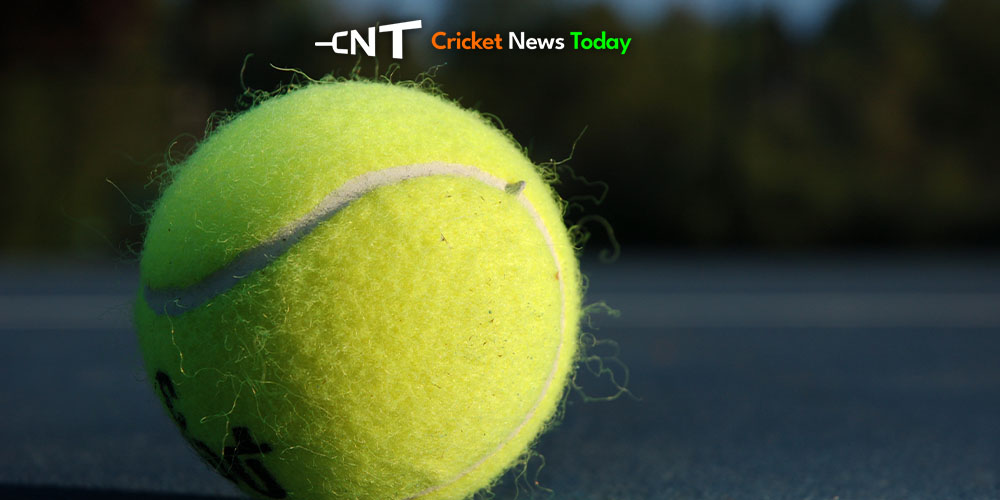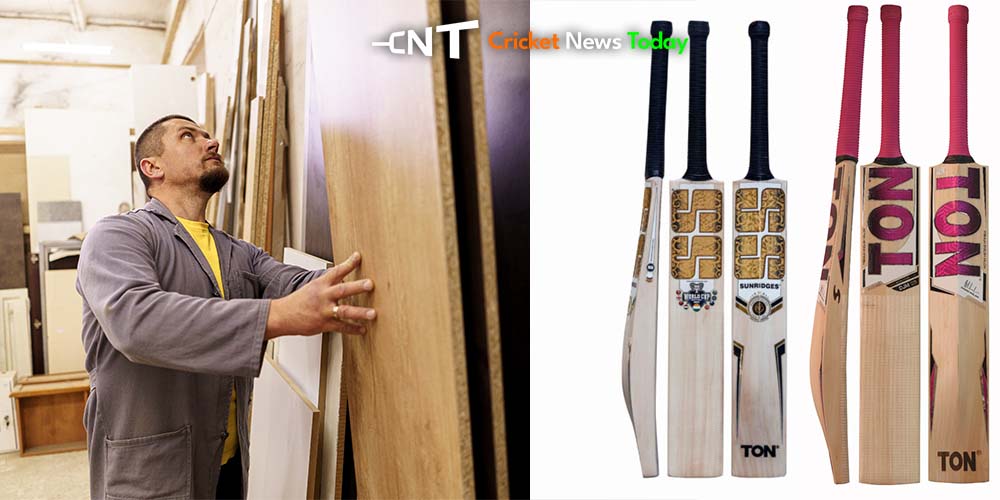Do you know what is a Tennis Cricket Bat? Let’s find out!
In international cricket, sturdy English willow bats are essential for striking the hard leather ball. However, in domestic and informal settings, soft tennis balls are often used, particularly when the game is played for leisure.
Why do we need a Tennis Cricket Bat?

Tennis ball cricket is a cricket variant played with a soft yellow tennis ball. The ball has a rubber core surrounded by air gas.
The outer coating is a felt made with a mixture of wool, nylon and cotton. The felt contributes to a delay in flow separation in the outer layer.
This reduces aerodynamic drag and gives the ball better flight properties. The weight of a moving tennis ball is lesser than that of a moving stone-hard leather cricket ball at the same velocity.
Because the two balls are different from each other, they require different bats for better performance. Many cricketers require personalized bats to suit their tactics and performance.
Likewise, a tennis cricket bat is a specialized bat designed for playing cricket with a tennis ball, often used in informal or street cricket matches.
Unlike standard cricket bats made from English willow or Kashmir willow, tennis cricket bats are typically lighter, more flexible, and made from cheaper materials like plywood or cheaper woods to suit the softer, less dense nature of a tennis ball.
Types of Tennis Cricket Bats
Shaped like regular cricket bats, the focus of a tennis cricket bat is on ease of use. The lightweight property of the tennis cricket bat allows players to swing faster and manoeuvre the bat more easily when hitting a tennis ball.
Tennis bats are cost-efficient, comfortable and seemingly durable in casual settings. Let us look at some of its types.
Plywood Bats
Plywood cricket bats are created using extremely fragile engineered wood, called plywood. These bats are cheap, lightweight and typically low quality.
They can only withstand soft tennis balls for short-term use in highly casual settings. Plywood bats are a good option for recreational street games and for middle school-level kids who are beginners to the game.
Poplar Willow Bats
Poplar willow bats are made from the poplar tree. These bats are lightweight and economical. They can be used by absolute beginners who play cricket using soft tennis balls.
Poplar bats are durable for casual play but may lack the power needed for harder tennis balls.
Kashmir Willow Bats
Kashmir willow bats are made from Kashmir willow, which is a heavy and robust wood. These bats are perfect for hard tennis balls or a high-powered game of cricket.
Kashmir Willow bats offer great strength and durability, although they are less economical than their counterparts.
However, these bats are a good investment for serious cricket players and can also work as tennis cricket bats for hard tennis balls.
Fibreglass Composite Bats
Fibreglass bats are made from composite materials like fibreglass or carbon fibre. These bats serve as good training aids capable of handling both soft and hard tennis balls.
They are affordable options for leisure play
Plastic Bats
Plastic bats are made from heavy-duty plastic. These bats are perfect for kids to play with soft lightweight tennis balls.
They are extremely light and inexpensive, primarily used for very soft tennis balls or training.
Which bat is best for tennis ball cricket?
Each type of tennis cricket bat is suited to different playing conditions. There are various levels of play, ranging from casual games to competitive tennis-ball tournaments and backyard matches.
The type of tennis bat also depends on the age of the player.
As specified above, plastic bats, plywood bats, poplar willow bats and Kashmir Willow Bats all serve different purposes and requirements.
Tips for matching bat type to playing level

Here are a few tips for you to match the tennis cricket bat to your playing level.
- If you want to buy a cricket bat for your toddler or your pre-teen kid, then a plastic bat would be the most suitable option.
- If you occasionally play street cricket just for leisure, then a plywood bat will work fine for you.
- If you’re developing an interest in cricket and thinking about honing your skills, then a poplar willow bat will be perfect for you.
- If you’re someone who just began their cricket training, then fibreglass bats are a good affordable option.
- If you wish to pursue cricket seriously, then a Kashmir or English Willow Cricket bat is going to be a fruitful investment.
Weight and Balance: What You Need to Know
Bat balance refers to the weight distribution between the bat’s handle and blade.
Weight and Bat balance are crucial in cricket. These parameters affect a batsman’s control, manoeuvrability, and shot execution.
Bat balance is categorized into three types:
Top-heavy balance
This type of bat balance is favoured by power hitters like Hardik Pandya. This technique adds more weight to the blade for powerful shots.
Bottom-heavy balance
Bottom-heavy balance is preferred by technical players like Cheteshwar Pujara. This type of bat balance aids with better control and provides more weight in the handle.
Even balance
Players like Rohit Sharma use even balance. This technique provides a combination of versatility, power and control.
The right weight distribution and optimum bat balance help batsmen in shot execution and overall performance.
Price ranges for tennis cricket bats
Different types of bats cater to different levels of play. From beginners to more experienced players looking for durable, affordable options, here are some economical price ranges for tennis cricket bats.
Tennis cricket bats under 500
Bats made with lightweight materials like plywood, poplar or plastic fall under this range.
The price point ranges from 200-500 INR.
Tennis cricket bats under 1000
Bats made from Kashmir Willow and fibreglass fall under this category. They offer more durability and better balance for playing with tennis balls.
The price point ranges from 500-1000 INR for basic bat categories.
Conclusion
Selecting the right tennis cricket bat depends on a player’s skill level, playing style, and personal preference.
Whether you’re a casual player, a young beginner, or someone serious about improving your game, there’s a bat designed to meet your unique needs.
Know you know how to make an informed choice for a fun and successful cricket experience.











